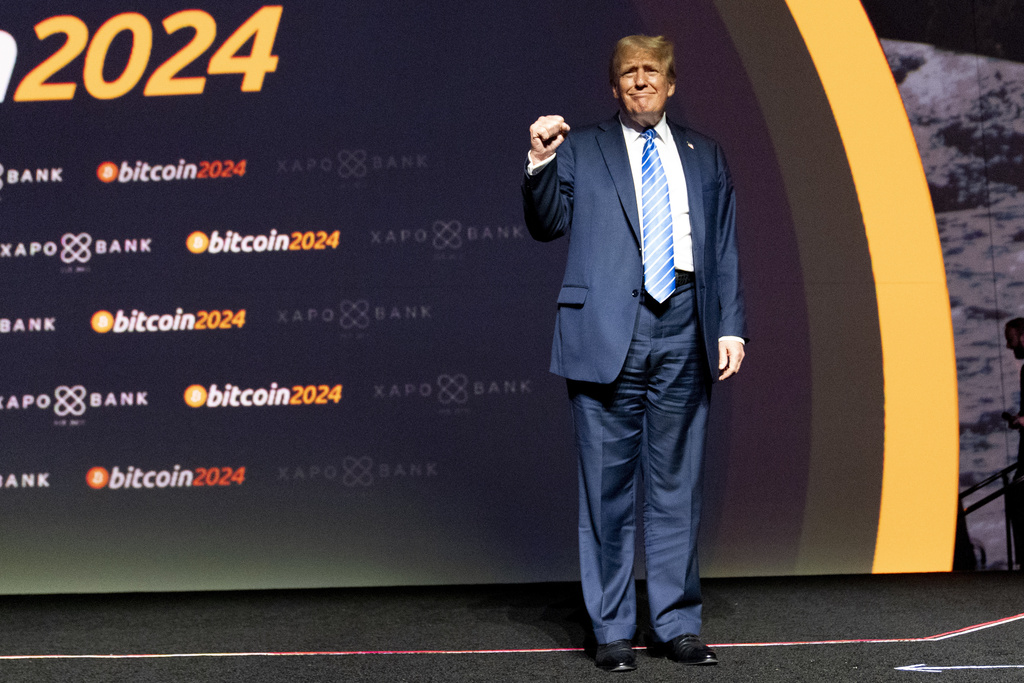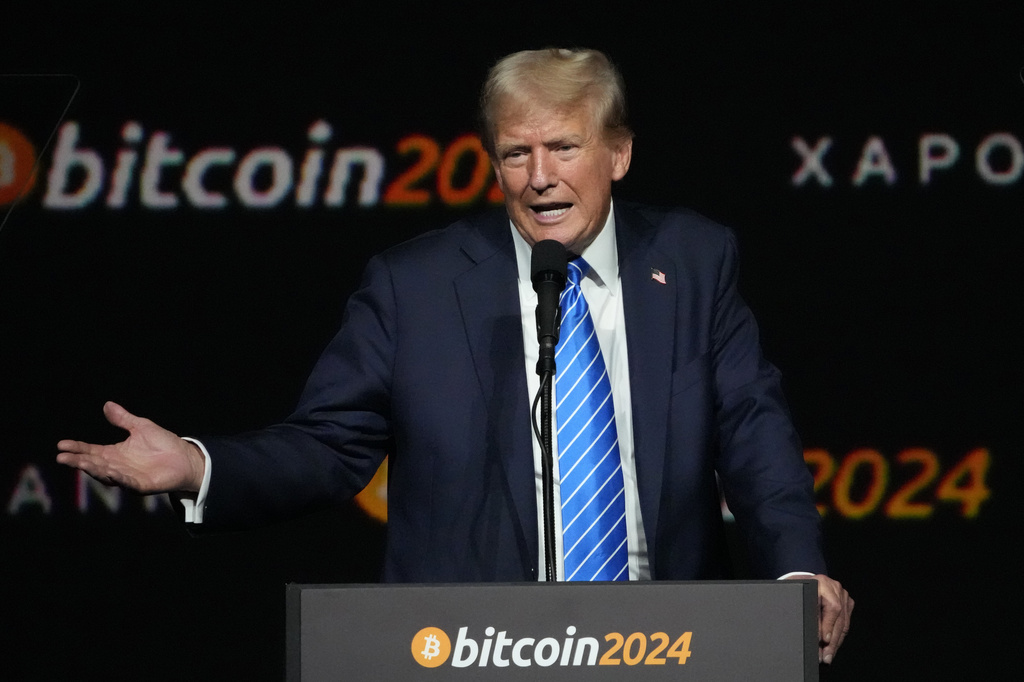Crypto Surges as Trump Win Sparks Bitcoin’s $87K Milestone \ Newslooks \ Washington DC \ Mary Sidiqi \ Evening Edition \ Bitcoin surged to a new record high of $87,083 following Donald Trump’s election victory, driven by expectations of a “crypto-friendly” administration. Analysts attribute the rise to Trump’s pro-crypto stance and the success of new bitcoin investment vehicles, despite the risks associated with the volatile crypto market and ongoing environmental concerns around bitcoin mining.

Bitcoin Rally After Trump Victory Quick Looks
- Record Bitcoin Price: Bitcoin surpassed $87,000, marking a 28% increase in just one week.
- Pro-Crypto Trump Policies: Trump’s pro-crypto agenda includes plans for a national bitcoin reserve, promising industry-friendly regulations.
- Spot Bitcoin ETF Influence: Recent approval and success of spot bitcoin ETFs have attracted massive investor inflows, supporting the rally.
- Market Risks: Crypto’s history of rapid price swings, regulatory uncertainty, and environmental impact remain major concerns.
Deep Look
As of 3:45 p.m. ET on Monday, bitcoin reached $87,083 according to CoinDesk, shattering previous records. This surge has been part of a broader rally across cryptocurrencies, as many investors anticipate that Trump’s presidency will bring a “crypto-friendly” approach to U.S. regulations, potentially creating a more accommodating environment for digital assets. Industry experts believe that Trump’s administration could provide leeway for the crypto industry by loosening current regulations and perhaps offering guidance that encourages industry growth.
The crypto community responded positively to Trump’s electoral win, given that he has previously promised to replace the current Securities and Exchange Commission (SEC) chair, Gary Gensler, who has taken a hard stance on regulating the crypto industry. Under Gensler’s leadership, the SEC pursued numerous enforcement actions and pushed for tighter crypto oversight, which many in the industry saw as stifling growth. Trump’s pro-crypto stance has therefore been viewed as a potential turning point, fueling investor enthusiasm and driving up prices.
Citi analysts David Glass and Alex Saunders noted that bitcoin and other cryptocurrencies surged in tandem with Trump’s favorable odds on election night. Their Friday research report explained that this sentiment largely stems from expectations of a regulatory shift that would back digital assets and possibly ease constraints that have previously hindered crypto expansion.
Despite the optimism, crypto remains a volatile market with substantial risks. Cryptocurrency assets have a long history of sudden value changes, often overnight or during weekends when trading volume can be low. This volatility has proven both lucrative and risky for investors. Long-term performance of crypto assets, particularly bitcoin, depends heavily on broader market conditions and macroeconomic factors.
Over the past few years, bitcoin has seen wild price swings. At the start of the COVID-19 pandemic in 2020, bitcoin traded around $5,000, but it skyrocketed to nearly $69,000 in November 2021 as demand for tech-driven assets soared. However, bitcoin’s momentum faded as the Federal Reserve implemented aggressive rate hikes in 2022 to combat inflation, and the market suffered further losses when the collapse of crypto exchange FTX damaged investor confidence. At one point in early 2022, bitcoin’s price dropped below $17,000, reflecting broader industry struggles.
Meanwhile, the environmental implications of bitcoin mining have drawn increasing scrutiny. Bitcoin is produced through a computational process known as mining, which requires vast amounts of energy, often derived from carbon-intensive sources like coal and natural gas. A recent report from the United Nations University and the journal Earth’s Future noted that bitcoin mining during 2020 and 2021 emitted carbon on a scale comparable to burning 84 billion pounds of coal or running 190 natural gas-fired power plants. About 45% of the energy for bitcoin mining came from coal, followed by natural gas (21%) and hydropower (16%).
In the United States, the Energy Information Administration (EIA) reported that crypto mining has grown rapidly, prompting some grid operators to raise concerns about its energy demand. The EIA’s preliminary data from February suggested that crypto mining could account for 0.6% to 2.3% of U.S. electricity consumption annually. While some mining operations have shifted toward renewable energy, the overall environmental footprint remains a point of contention, with regulators increasingly calling for climate-conscious practices in the industry.
Crypto Surges







